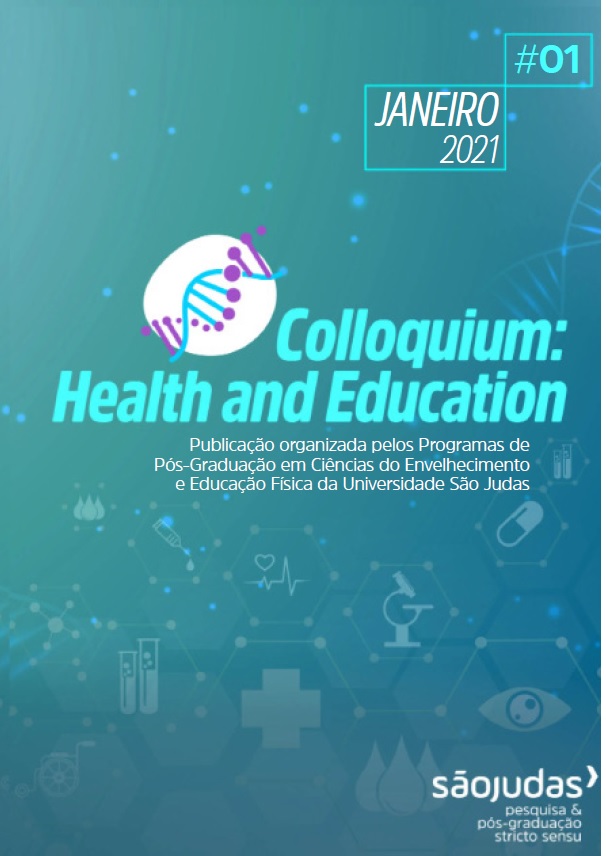Commitment to the Cognitive Function in the Elderly Due to Exposure to Particulate Material
DOI:
https://doi.org/10.37497/colloquium.v1i1.20Keywords:
Pollution, Particulate material, Neurodegeneration, AlzheimerAbstract
Population aging brings with it health problems that challenge health and social security systems. Getting older does not necessarily mean getting sick. Unless there is an associated disease, aging is associated with good health. Associations between air pollution and adverse cardiopulmonary health effects are well documented. Ultrafine particles (UFP; <100 nm in diameter), found ubiquitously in the air indoors and outdoors, are considered the most toxic component of ambient air pollution. Increasing evidence suggests that air pollutants can also adversely affect the central nervous system (CNS). Epidemiological studies have identified associations between exposure to various ambient air pollutants, such as particulate matter (PM), ozone, carbon monoxide and nitrogen dioxide with ischemic cerebrovascular events, with one of the first studies reporting an increased risk of stroke due to exposure to coal vapors indoors. As the incidence of Alzheimer's disease (AD) and other neurodegenerative diseases increases, there is a growing interest in environmental factors that can contribute to the onset and progression of the disease. Air pollution has been known as a major health risk for decades. Although its effects on cardiopulmonary morbidity and mortality have been extensively studied, there is growing evidence that exposure to polluted air is associated with impaired cognitive functions at all ages and an increased risk of AD and other dementias later in life; this association is particularly notable with traffic-related pollutants.
Downloads
References
AMBIENT, W. H. O. Air Quality and Health. Fact Sheet, n. 313, 2014.
BLOCK, M. L.; CALDERÓN-GARCIDUEÑAS, L. Air pollution: mechanisms of neuroinflammation and CNS disease. Trends in Neurosciences, v. 32, n. 9, p. 506–516, 2009.
BODA, E. Compreendendo os efeitos da poluição do ar na neurogênese e gliogênese no cérebro adulto e em crescimento. p. 1–17, 2020.
CETESB. Qualidade Do Ar Ambiental. p. 1–2, 2019.
CRAIG, L. et al. Air pollution and public health: a guidance document for risk managers. Journal of toxicology and environmental health. Part A, v. 71, n. 9–10, p. 588–698, 2008.
DE PRADO BERT, P. et al. The Effects of Air Pollution on the Brain: a Review of Studies Interfacing Environmental Epidemiology and Neuroimaging. Current Environmental Health Reports, v. 5, n. 3, p. 351–364, 2018.
ESQUENAZI, D.; DA SILVA, S. B.; GUIMARÃES, M. A. Aspectos fisiopatológicos do envelhecimento humano e quedas em idosos. Revista Hospital Universitário Pedro Ernesto, v. 13, n. 2, p. 11–20, 2014.
GOLGHETTO CASEMIRO, F. et al. Impacto da estimulação cognitiva sobre depressão, ansiedade, cognição e capacidade funcional em adultos e idosos de uma universidade aberta da terceira idade. Revista Brasileira de Geriatria e Gerontologia, v. 19, n. 4, p. 683–694, 2016.
HUGHES, S. Um terço da demência pode ser evitável com mudanças no estilo de vida. 2017.
HUSSENOEDER, F. S. et al. Mild cognitive impairment and quality of life in the oldest old: a closer look. Quality of Life Research, 2020.
INSTITUCIONALIZAÇÃO, C. N. D. E. Qualidade de vida da pessoa idosa conforme nível de institucionalização. 2017.
KALACHE, A. Programa de Envelhecimento e Saúde. Organização Mundial de Saúde, v. 13, p. 1107–1111, 2008.
KILIAN, J.; KITAZAWA, M. The emerging risk of exposure to air pollution on cognitive decline and Alzheimer’s disease – Evidence from epidemiological and animal studiesBiomedical Journal, 2018.
KILIAN, J.; KITAZAWA, M. O risco emergente de exposição à poluição do ar no declínio cognitivo e na doença de Alzheimer - Evidências de estudos epidemiológicos e em animais Palavras-chave. p. 1–60, 2020.
LIVINGSTON, G. et al. Dementia prevention, intervention, and care: 2020 report of the Lancet Commission. The Lancet, v. 396, n. 10248, p. 413–446, 2020.
NAVEH-BENJAMIN, M. et al. Age-related differences in immediate serial recall: dissociating chunk formation and capacity. Memory & cognition, v. 35, n. 4, p. 724–737, Jun. 2007.
SUADES-GONZÁLEZ, E. et al. Air Pollution and Neuropsychological Development: A Review of the Latest Evidence. Endocrinology, v. 156, n. 10, p. 3473–3482, Out. 2015.
VIANA DE FREITAS, E. . P.; LIGIA. Tratado de geriatria e gerontologia. 3o ed. [s.l: s.n.].
WHO. Burden of disease from Ambient Air Pollution for 2016. n. Lmi, p. 2012–2014, 2016.
Downloads
Published
How to Cite
Issue
Section
License

This work is licensed under a Creative Commons Attribution 4.0 International License.
O(s) autor declara(m) que o trabalho é original e inédito, não tendo sido submetido à publicação em qualquer meio de divulgação, especialmente em outro periódico, nacional ou internacional, quer seja em parte ou na íntegra;
Caso aprovada e selecionada, fica autorizada a publicação da produção na Revista, a qual não se responsabiliza pelas opiniões, ideias e conceitos emitidos nos textos, por serem de inteira responsabilidade de seu(s) autor(es);
A publicação do artigo implica transferência gratuita dos direitos autorais à Revista, nas versões eletrônica e impressa, conforme permissivo constante do artigo 49 da Lei de Proteção de Direitos Autorais (Lei 9.610, de 19/02/98), e que a não observância desse compromisso submeterá o infrator a sanções e penas previstas no mesmo diploma legal;
Todos os artigos publicados são licenciados sob a Licença Creative Commons Attribution, que permite o compartilhamento do trabalho com reconhecimento da autoria e publicação inicial nesta revista.















